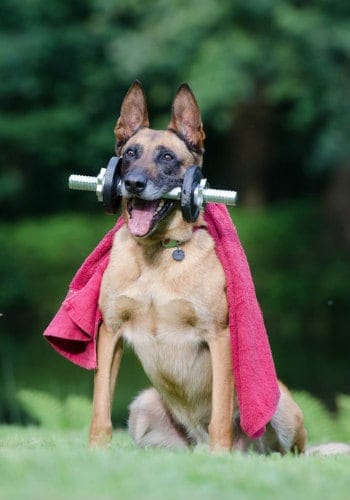Dogs provide their humans health benefits in addition to unconditional love.
They calm us when we are anxious, love us so thoroughly that we can’t possibly be depressed, and stimulate us to release the feel-good hormone endorphins in our brains.
In recent years, dogs have stepped up their game to become service dogs. They guide and help their owners, they allow themselves to be read a story in order to help a child with learning disabilities learn to read and speak better, and they even visit hospitals to cheer patients.

The Americans with Disabilities Act or ADA describes service dogs as “a dog that is individually trained to do work or perform tasks for a person with a disability.” The stress is put on “dog,” “work,” and “disability.” Only dogs are labeled service animals. Miniature horses are also service animals but are regulated differently. Neither are considered pets.
Service dogs perform work or tasks for their disabled owner that pertain to the disability. Reminding the owner to take his medications, helping him wake up at certain times for doctor appointments or to take meds, or aiding in walking are some of the tasks service dogs perform. Calming an anxiety-suffering owner in very loud circumstances is also the purview of a service dog.
Disability is the last thing in the description that needs explanation. Not everyone who thinks they need a service dog will qualify for one. The disability must be one that is commonly found such as PTSD, autism, seizures of various types and causes, low blood sugar episodes, those with balance problems, and some emotional problems.
Before we discuss training them, it would be a good idea to understand the difference between a service dog and a therapy dog. Service dogs are generally Golden or Labrador retrievers, German Shepherds or border collies. However, any breed, large or small, may be trained as service dogs if they meet the criteria. The dogs are limited in scope to working for one owner to help the owner with a disability. Therapy dogs are more emotional in scope, bringing joy and comfort to anyone in adverse situations such as those in nursing or rehab facilities, kids in hospitals, or the homeless.
Service dogs must focus on their owner. The must be desensitized to the noise and movement of the public. They must be trained to perform specific tasks or jobs for their owner. Training takes up to two years before the dog will be released to a disabled client. They wear a vest identifying them as service dogs and asking the public not to pet them.

Being a service dog isn’t easy. The animal must meet the standards of not only the Assistance Dogs International Public Access Test, but also the AKC Canine Good Citizen strictures. The animal must be able to potty on command, focus on his owner and pay no attention to distractions, and be well versed in Public Access skills. These include:
- Sit and down on command in varying circumstances
- Controlled actions when entering and exiting a vehicle, entering and exiting a building, and approaching a building
- Heeling as he is going through a building
- Being under control in a restaurant
- Being under control when the leash has been dropped
Service dogs are trained to perform specific tasks for their owners. Some pull a wheelchair, while others let their deaf owners know the doorbell is ringing. Some fetch the medicine for an owner in the throes of a seizure or other type of attack, pick up items that have dropped onto the floor, or walking beside a disabled person on a walker to guide him.
There are professional organizations that train service dogs. The attrition rate is about 50 to 75 percent. Some owners train their dogs to be service dogs. It is highly recommended that owners who do that consult with a professional dog trainer before beginning a training regimen.
Not every dog is qualified to be a service dog. There are definite traits the dog should have before training to be a service dog:

- Has been spayed or neutered
- Calm and friendly
- Follows you around
- Alert but doesn’t react
- Learns quickly and retains what he’s learned
- Handles well different environments and circumstances
- Eager to please
- Anyone can touch him, especially strangers
If the dog has these personality traits, then we can move on to how to train him. People can train their own dogs, as we’ve mentioned, but a professional’s help is also very highly recommended:
Heel
This could be quite difficult to teach a dog. It hasn’t anything to do with “here” or “sit” commands. It’s about being in close proximity to the dog’s owner as well as being that close in all of his owner’s movements.
Proofing
Most people don’t know how to tune out themselves, much less teaching their dog to do it. But it must be done. The dog must not react to any distraction at all and be completely on command at all times.
Tasking
This is often the easiest part of training. The dog must be trained to perform disability-specific tasks for its owner.
Now it’s time for the Public Access Test. Video confirmation of the dog’s accomplishments will come in handy and is suggested. Now the dog must publicly show that he has learned his job and can:
- Go potty on demand
- Not bark, growl, bite or otherwise manifest dog behaviors
- Not seek attention
- Be completely calm no matter what
When the dog has passed all the testing, it will be time to register him with a reputable organization such as Assistance Dogs International, Canine Companions for Independence, or Mobility Assistance Dogs.
Next and last of all, you’ll want to make accommodations for your service dog to accompany you to public places. Some restaurants and stores won’t allow an animal indoors, even if he’s a service dog. You’ll need to contact the management of those restaurants and stores you frequent to gain permission, preferably in writing, to bring your service dog inside.

